8 Dreamy Water Features for Big & Small Gardens
Whether a sleek, modern rill or a leafy cascade pleases your senses, there’s a water feature for every style of garden
Amanda Pollard
9 October 2019
Senior Editor at Houzz UK and Ireland. Journalist and editor specialising in interiors and architecture.
Senior Editor at Houzz UK and Ireland. Journalist and editor specialising in interiors... More
There’s something wonderfully relaxing about listening to trickling water in a garden, but we often assume we need a large space that can accommodate a pond or stately waterfall. In fact, there’s a water feature idea for every size of garden – take a look at these designs to find inspiration for your own outside area.
Surround with plants
If you’re looking for an idea that merges traditional and contemporary design, choose a feature like this. The circular pool with a rill above it forms a classic waterfall design, added to by the beautiful planting that surrounds it.
The copper gives it a modern twist, however, as does the straight-edged form of the rill.
If you’re looking for an idea that merges traditional and contemporary design, choose a feature like this. The circular pool with a rill above it forms a classic waterfall design, added to by the beautiful planting that surrounds it.
The copper gives it a modern twist, however, as does the straight-edged form of the rill.
Cut through the middle
This terrace is enhanced by a water feature that’s both minimal and dynamic. The designer has used the living wall as the starting point to run a thin bronze rill vertically down and onto the paving.
This terrace is enhanced by a water feature that’s both minimal and dynamic. The designer has used the living wall as the starting point to run a thin bronze rill vertically down and onto the paving.
It then cuts across the patio and crosses over to run water in all directions. The bronze channel is positioned off-centre, so the owners can still use the space easily.
Designer Stefano Marinaz says, “The entire paved floor sits on pedestals on a concrete base with a waterproof membrane. If there’s a leak, [the homeowners] can just lift the stone without breaking anything.”
Designer Stefano Marinaz says, “The entire paved floor sits on pedestals on a concrete base with a waterproof membrane. If there’s a leak, [the homeowners] can just lift the stone without breaking anything.”
Trickle down stairs
If you have some steps in your garden, add a designer touch by installing a water cascade alongside them.
Here, the designers have created a stepped feature on the left of the brick staircase wall. Water flows from top to bottom for a series of mini waterfalls that add movement and soothing sound.
If you have some steps in your garden, add a designer touch by installing a water cascade alongside them.
Here, the designers have created a stepped feature on the left of the brick staircase wall. Water flows from top to bottom for a series of mini waterfalls that add movement and soothing sound.
Create a clear cascade
For a look that works well in a contemporary garden, fit a waterfall blade to the end of a rill. These flat, stainless-steel lips allow the water to cascade off, clear of the wall, in one sheer expanse.
They’re available in a variety of widths, so you should be able to find one to fit your stream exactly. To create a stunning feature at night, choose a design that comes complete with a strip of LED lights that fit along it.
For a look that works well in a contemporary garden, fit a waterfall blade to the end of a rill. These flat, stainless-steel lips allow the water to cascade off, clear of the wall, in one sheer expanse.
They’re available in a variety of widths, so you should be able to find one to fit your stream exactly. To create a stunning feature at night, choose a design that comes complete with a strip of LED lights that fit along it.
Encourage reflection
Even if space is limited in your garden, there are still plenty of ways you can bring in water. Rather than installing a feature on the floor, use vertical space instead.
This mirrored waterfall panel has been tucked into the raised beds that surround a seating area. It’s the ideal spot for enjoying the gentle trickle of water, and the mirrored surface helps to bounce light around.
Find landscape architects and garden designers in your area.
Even if space is limited in your garden, there are still plenty of ways you can bring in water. Rather than installing a feature on the floor, use vertical space instead.
This mirrored waterfall panel has been tucked into the raised beds that surround a seating area. It’s the ideal spot for enjoying the gentle trickle of water, and the mirrored surface helps to bounce light around.
Find landscape architects and garden designers in your area.
Play a long game
For a water feature that ages with the garden, try untreated copper. This waterfall wall has been formed by welded copper and will naturally patinate over time. The water comes through the wall to the chute, then spills over into the pool below.
For a water feature that ages with the garden, try untreated copper. This waterfall wall has been formed by welded copper and will naturally patinate over time. The water comes through the wall to the chute, then spills over into the pool below.
Tuck to the side
Need most of your outside space for entertaining? Try this neat, streamlined idea. A simple cascading waterfall blade juts out from a wall above a drainage tray. The crisp, contemporary design takes up hardly any room, but the feature makes a real impact in the garden.
Need most of your outside space for entertaining? Try this neat, streamlined idea. A simple cascading waterfall blade juts out from a wall above a drainage tray. The crisp, contemporary design takes up hardly any room, but the feature makes a real impact in the garden.
Lead the way
In this contemporary garden, a stunning water feature, complete with waterlilies and goldfish, has been installed in a relatively small area. To achieve this, the designer used the entire width of the plot, rather than the length.
The stepping stones work well in the compact space, as they encourage people to slow down and turn a quick walk into a leisurely stroll from the patio to the garden beyond.
See more garden images
Read more:
How to Introduce Water Features in GardensGorgeous Water Features for Indoor & Outdoor Spaces
Tell us:
Are you planning to install a water feature in your garden? Which of these ideas would work in your space? Share your thoughts in the Comments section.
In this contemporary garden, a stunning water feature, complete with waterlilies and goldfish, has been installed in a relatively small area. To achieve this, the designer used the entire width of the plot, rather than the length.
The stepping stones work well in the compact space, as they encourage people to slow down and turn a quick walk into a leisurely stroll from the patio to the garden beyond.
See more garden images
Read more:
How to Introduce Water Features in GardensGorgeous Water Features for Indoor & Outdoor Spaces
Tell us:
Are you planning to install a water feature in your garden? Which of these ideas would work in your space? Share your thoughts in the Comments section.
Related Stories
Working with professionals
What is the Role of a Landscape Architect?
Discover the multiple roles played by a landscape architect during the design and beautification of the outdoor spaces
Full Story
Outdoors
7 Expert Tips for a Lush, Green Terrace Garden
A gardening expert gives insightful and essential steps on how to go about setting up a thriving rooftop garden
Full Story
Outdoors
8 Best Sun-Loving Plants for Indian Gardens
Want carefree colour? Fill your garden with a wide range of plants that thrive in full sun, and enjoy the colour show
Full Story
Balconies
8 Climbing Plants Great for Indian Balconies & Gardens
Wish to add some vertical interest to your balcony garden? These eight climbers & creepers can be your pick
Full Story
Outdoors
8 Most Effective Water-Saving Techniques for Your Garden
Is your garden water-conscious? Adopt these strategies to save a precious resource and lower your water bill at the same time
Full Story
Outdoors
Outdoor Plant: A Guide to Growing the Golden Bamboo
Introduce this gorgeous plant in your garden as a soother for sore eyes and tired minds
Full Story
Outdoors
Covered Terraces, Patios & Balconies: 10 Outdoor Ceilings to Love
An outdoor space can be more than juts an outdoor space. Which of these spectacular ceilings are your favourite?
Full Story
Balconies
7 Magical Ways to Enhance Your Garden With Orbs & Mirrors
Here are clever hacks that use the versatility of reflective surfaces to transform garden spaces
Full Story
Outdoors
Add Volume to Your Garden With These Fast-Growing, Hassle-Free Plants
Plump up your garden's flat look with these beautiful, enticing grasses
Full Story
Outdoors
A Guide to Landscaping With 5 Types of Gravel & Stones
Give your garden design some textural bam with pebbles, granite, river rocks and other permeable materials
Full Story

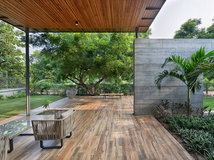
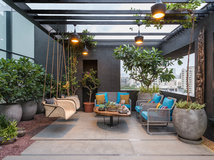
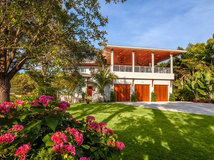

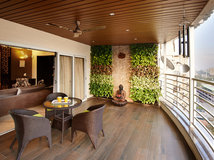

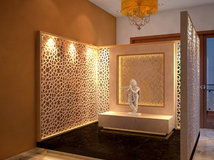

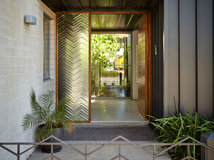

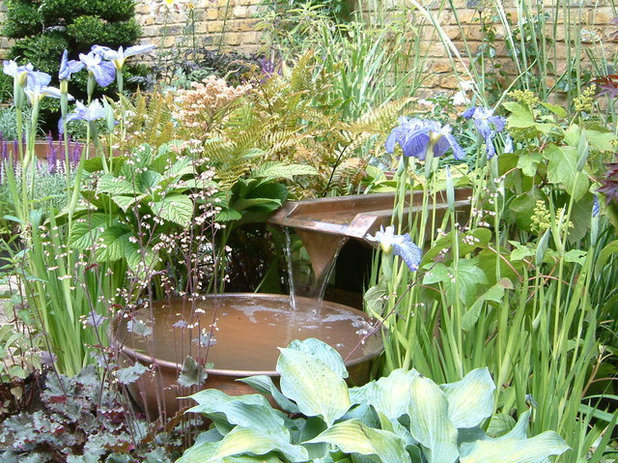
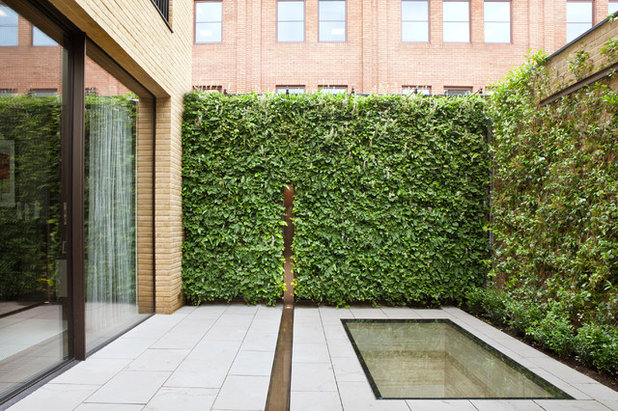
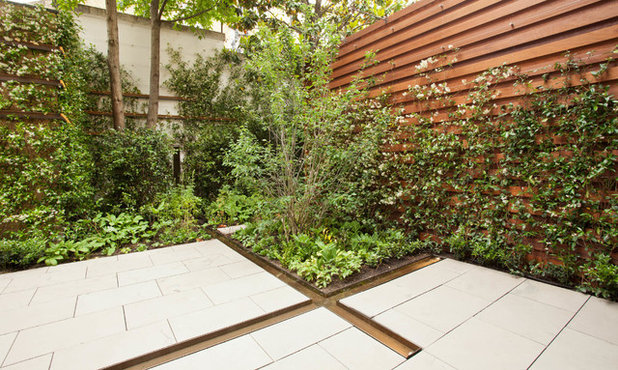

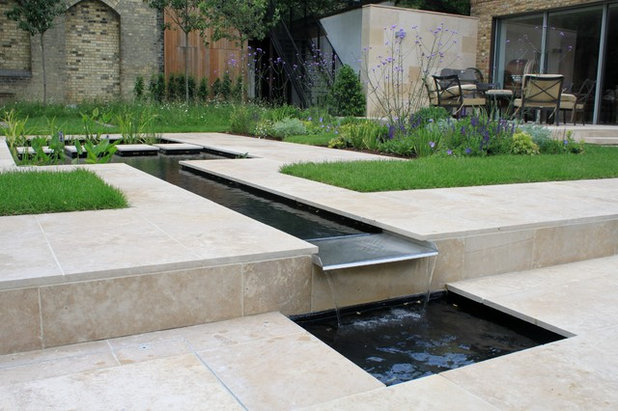
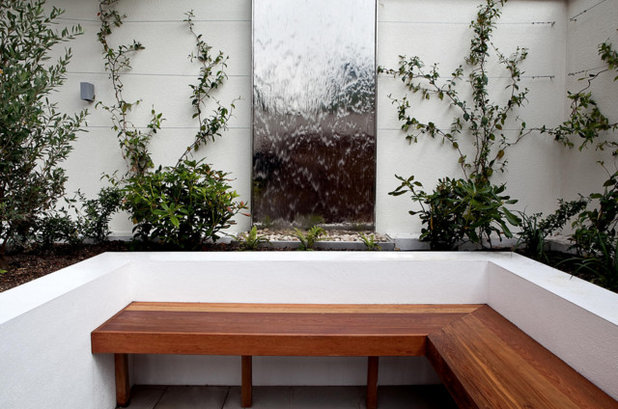
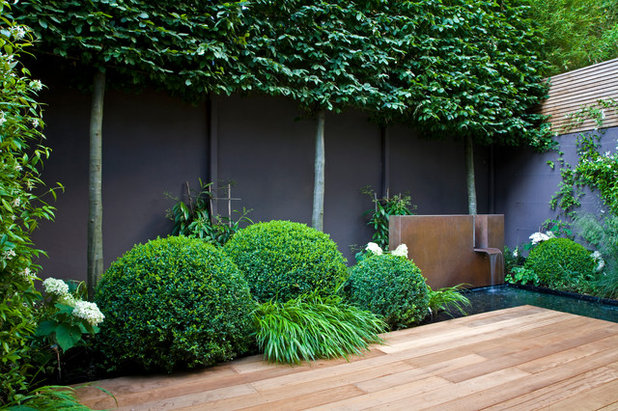
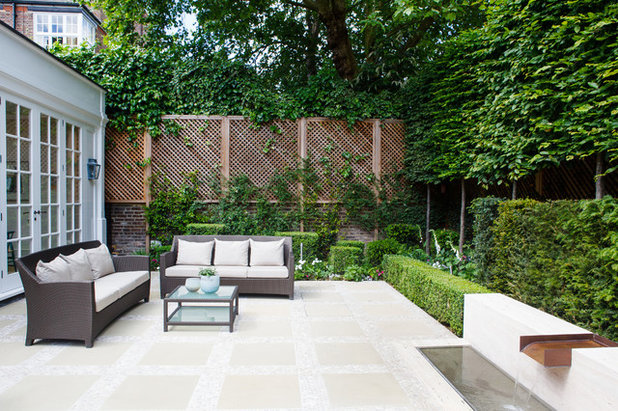
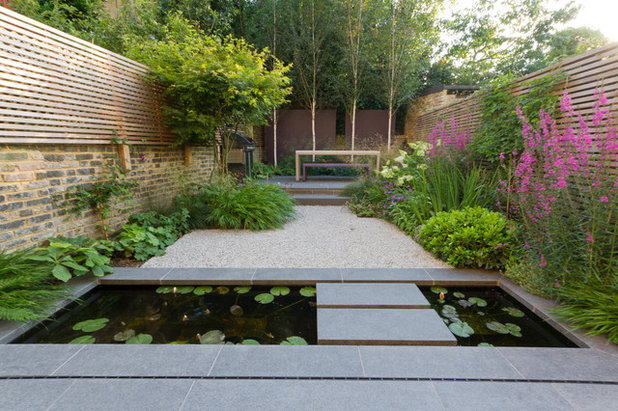
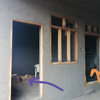
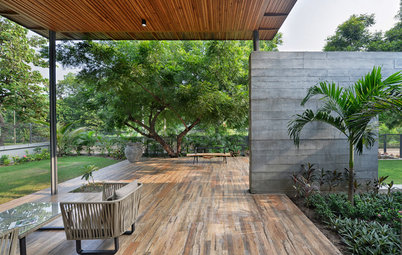
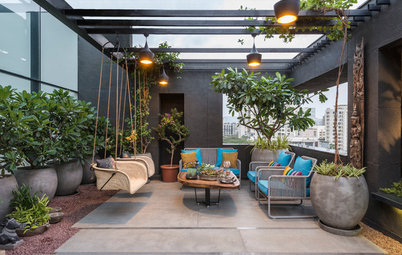
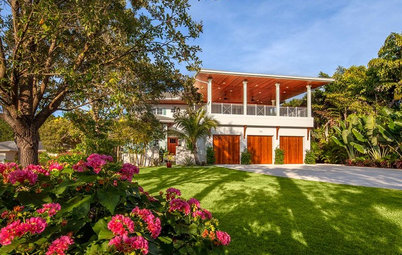
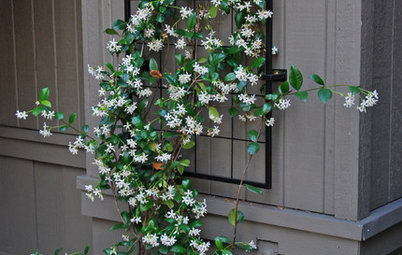
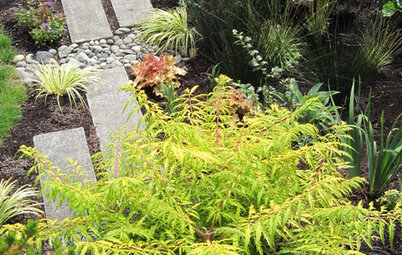
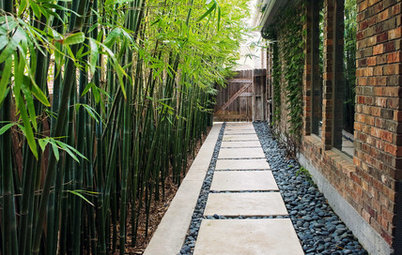
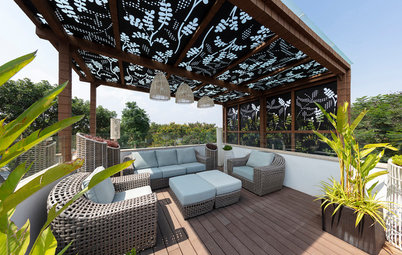
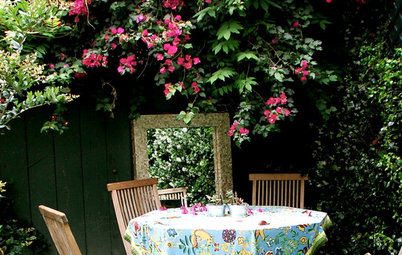
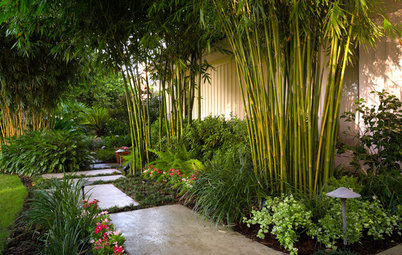
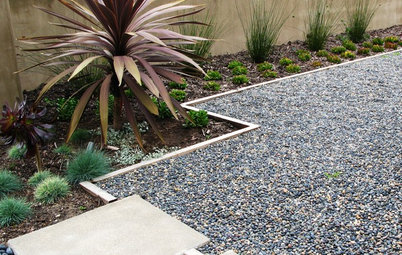
Good idea, sharoncalv: On the ranch, I use to pull out many a dead squirrel, once in a while a skunk. I have 6 water tanks ranging from 75 to 100 gallons.
There are two things I use - one, I put in a rectangular board. The board is easy for a critter to hang onto until it reaches an edge for it to jump out. I do have to clean if off every now and then and to let it dry out so it will float.
The second method is use of a marine rope which won't get algae, nor soggy with water as many household ropes do. I fashion a type of a 'ladder' with knots (macrame) and hang it with a couple hooks over the edge of the tank. I make it long enough to reach the bottom. This way if the water is low and the critter can't jump from the board platform, it can swim to the rope 'ladder' and easily climb out.
Since I've begun doing that years ago, it's rare I have to pull out a dead mammal. BTW, if there is a dead animal in a tank, I make sure I clean the tank thoroughly for potential harmful microbes from a dead animal. Then I fill it with clean water for the livestock to drink.
These methods will work for any think that may be large or smaller. If you have a pond for koi or goldfish, you can also use stones and build steps from the bottom to the top which not only give more features but also provide hideouts for fingerlings.
Algae: I'd like to touch a bit on this subject since most people write about its negativity. Algae isn't harmful to a pond, lake or water feature. It really does have an important place in the wetlands/water/ecosystem. Algae is a plant like other plants - it's job is to absorb nitrates. Nitrates are left from beneficial bacteria once that bacteria degrades/consumes fish and plant waste. Nitrates are food for plant life such as lily pads and aquatic milkweed and other pond plants. Algae releases oxygen and use carbon dioxide - both are a good thang in any water area whether wetlands, pond, lake or water feature. It's a great beneficial
Algae make their own food from sunlight. So, shallow ponds/features are prone to algae problems since sunlight penetrates into the shallow waters - sometimes all the way to the bottoms. If that is your problem, reduce the sunlight by providing shade such as trees, shrubs, milkweeds (and help the monarch at the same time) and some non-invasive lilies and other water plants.
Know the type of algae you have. There are two types - suspended and string. Fill a clear glass of pond water and hold it against something white. If the water is green, it's suspended algae. If it's clear - you still may have string algae which basically grows on ledges, rocks, and moving water. The moving water can be an area of hyper-oxygenation which string algae loves. You can pull it off rocks and ledges to a degree. It will spool around your hand/fingers.
It's easier to correct the balance of your pond/lake/water feature naturally than add chemicals which can cause problems in themselves. It's also expensive, time consuming and must be done frequently and correctly to have any long term effect - at least for a while until you correct the balance of the ecosystem. It could also be that you have too many fish in your backyard koi/goldfish pond.
If you have an unbalanced system, you have to figure out the why then correct it using nature as your guide. It's a lot cheaper and has a longer lasting effect than chemicals. Nature cleans all lakes and ponds. Learn how nature handles overloads then apply it to your own water feature or pond or lake.
The above comments are spot on! Thanks to both of you for writing it all out. Allowing for critter escape is important not only for their safety but for the eco sytem of your healthy pond. Having had lots of ponds, formal as well a natural,I agree it is it is all about BALANCE.
Whether or not you have mechanical filtration, of any amount, or rely on just mother nature for your fish and plants..... it is BALANCE and that BALANCE takes time and a huge amount of patience.
A lot of folks think- "dig it, fill it with water, add fish" and your done. So Wrong!!
It takes a while to get the ecosystem going and the ecosystem requires the right amount of plant, fish and water surface ratios as well as depth, light and beneficial bacteria. This take time to build on and is often a battle (lots of trial and error tests).
Buy, read and study pond books regarding the "chemistry" of it all not just the pretty looking pond coffee table books before you try this. Those types of books will let you in on trade secrets and save you the heartache (and money) of a swampy mess. Once you have a successful pond, any other future ponds or water gardens will be easier to start due to experience.
Water test kits prove invaluable too as do submersible pumps to help water circulation/flow. There are just so many factors such as location, water depths, climate temps, water type/quality that go into a successful ponds- too many to list!! Buy several serious "how to" books. Even a "sick fish" book to let you know what you might face some day if a fish (or all your fish) gets ill.
Once happily established, the water feature must be maintained too. Additions of fish and or plants must be done carefully. Don't forget to quarantine new things first before introduction into your established pond to avoid "infecting" your otherwise healthy
eco system.
Most do not have the time, or patience and end up scraping the project if they cant get it past the "green" stage. Ugh!! I knew someone who tried to combat the green with BLEACH. Needless to say THAT was a disaster (and sad)..... remember a pond will never/ should never be algae free.... fish love to nibble green algae off rocks and pots etc....yum! String algae is another topic, but harvested off items by hand is the best way to rid your pond of it as suggested above by Celestina89.
Start out with something small.....in a large barrel or a livestock watering trough for instance. or just try a "water garden" - Bigger is not necessarily better. Once your confidence is built up and your garden or small pond is on the right track then go bigger if you have the time and money.
Happy Ponds to all